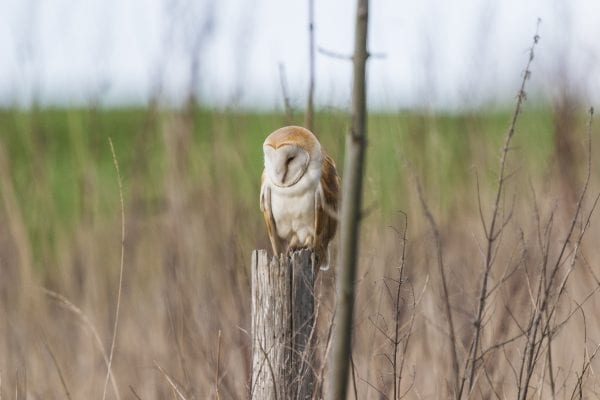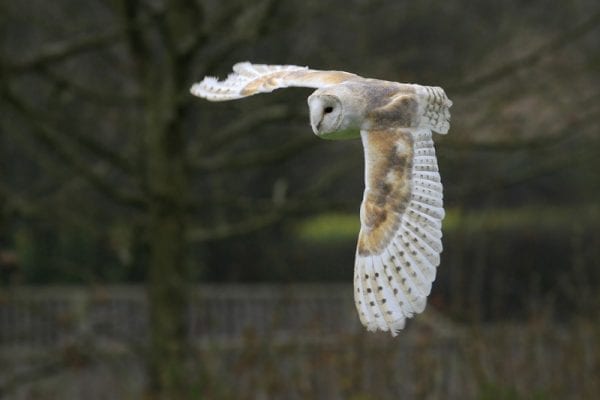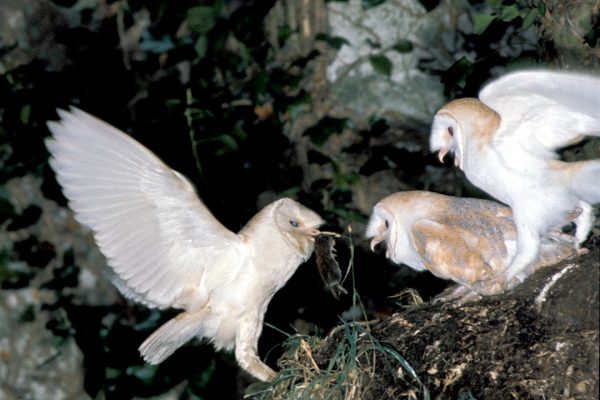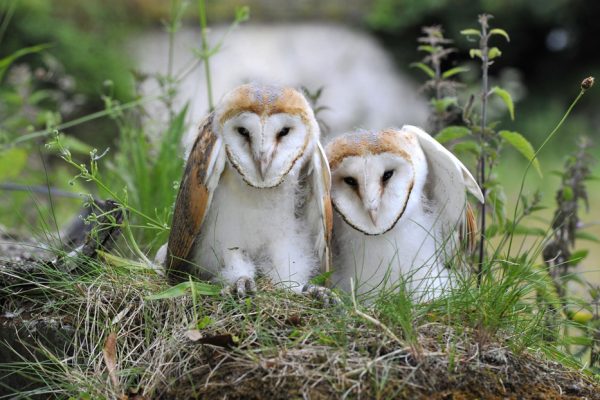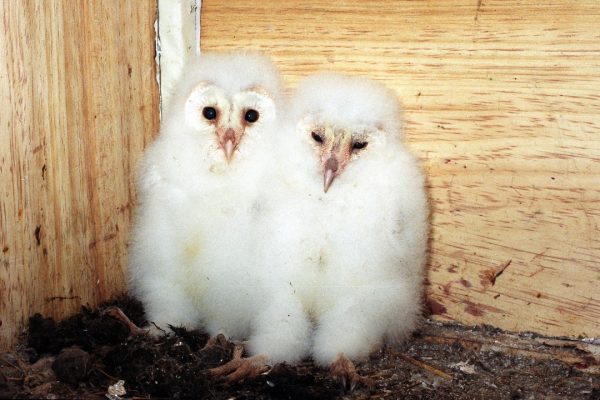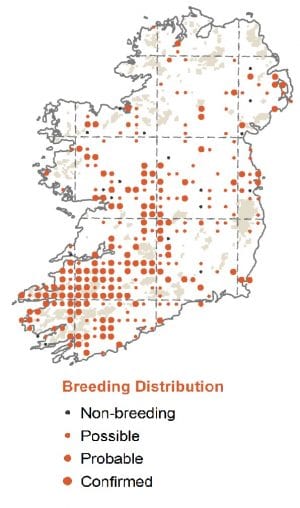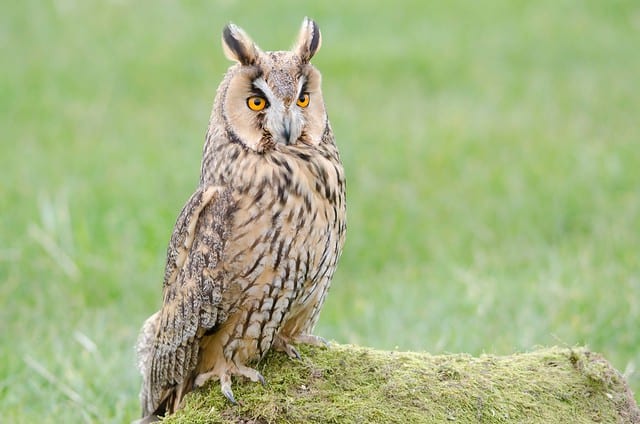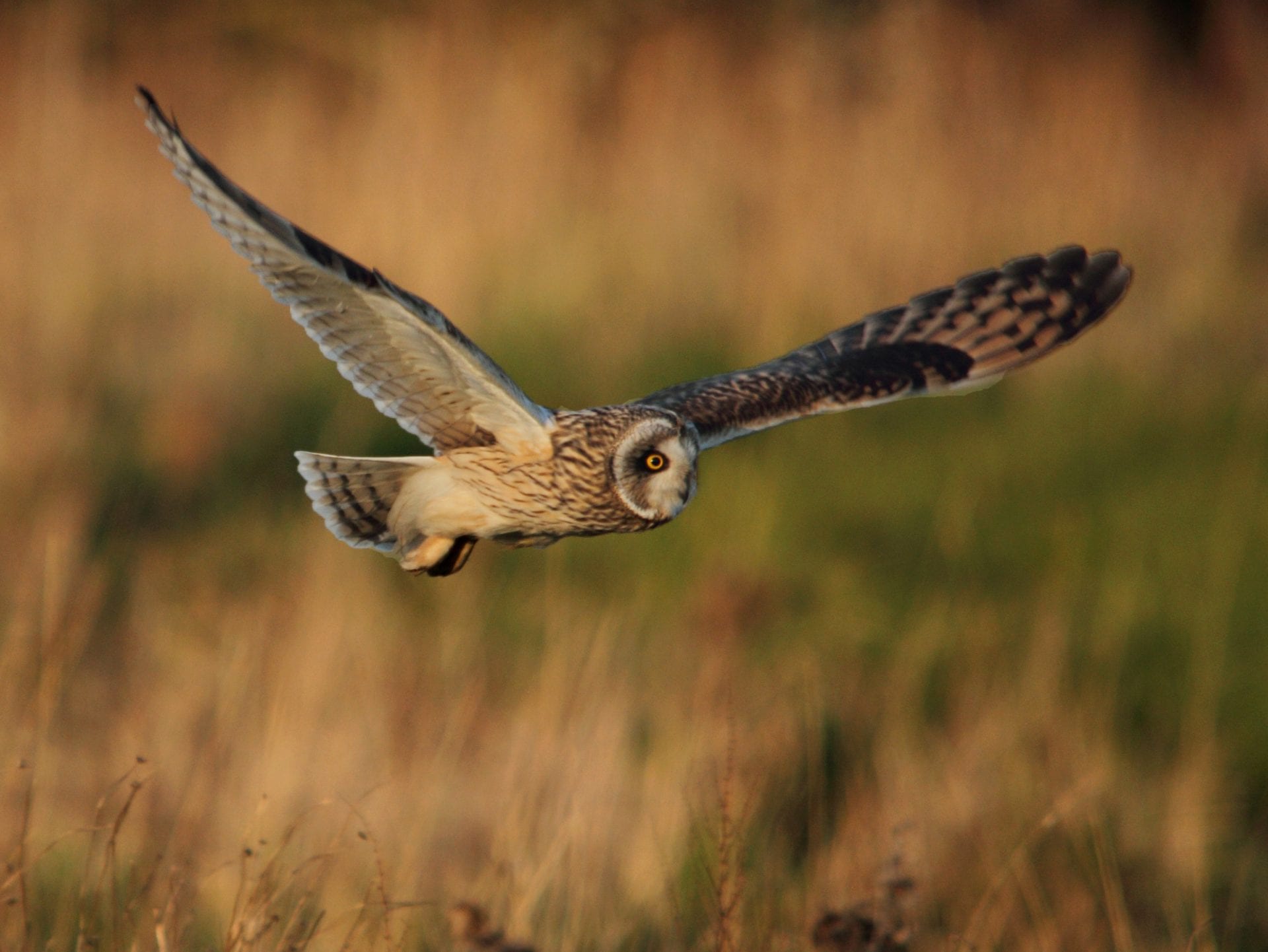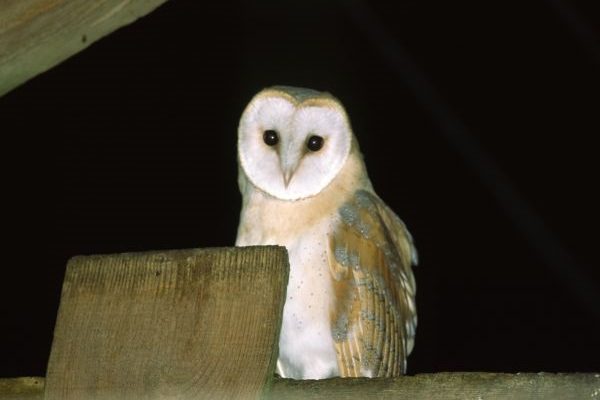
Barn Owl
| Irish Name: | Scréachóg reilige |
| Scientific name: | Tyto alba |
| Bird Family: | Owls |
red
Conservation status
Conservation status
Status
Scarce resident mainly in central and southern Ireland. No longer breeds in large patches of northern, western and eastern Ireland. Red-listed in Ireland due to a significant decline in the breeding population. The European population is currently evaluated as Declining.
Identification
Rarely seen during the day, only active late at night. Most frequently seen flying across road in car head-lights. Appears a ghostly white, with no markings on the underwing - Long-eared owl has a dark comma mark. Given a close view, shows a remarkably intricate patterning on the wings, back and head.
Voice
A loud shriek is most frequently heard.
Diet
Hunts small mammals and frogs. In Ireland, found to be very dependent on Greater White-toothed Shrew with other small mammals forming a much smaller percentage of prey caught.
Breeding
Breeds in ruined buildings, such as castles and to a lesser extent in outbuildings (barns/sheds). Will use special nest boxes. Breeding success heavily dependent on the availability of suitable prey.
Wintering
Largely resident, though young birds will wander in search of new territories.
Monitored by
Blog posts about this bird
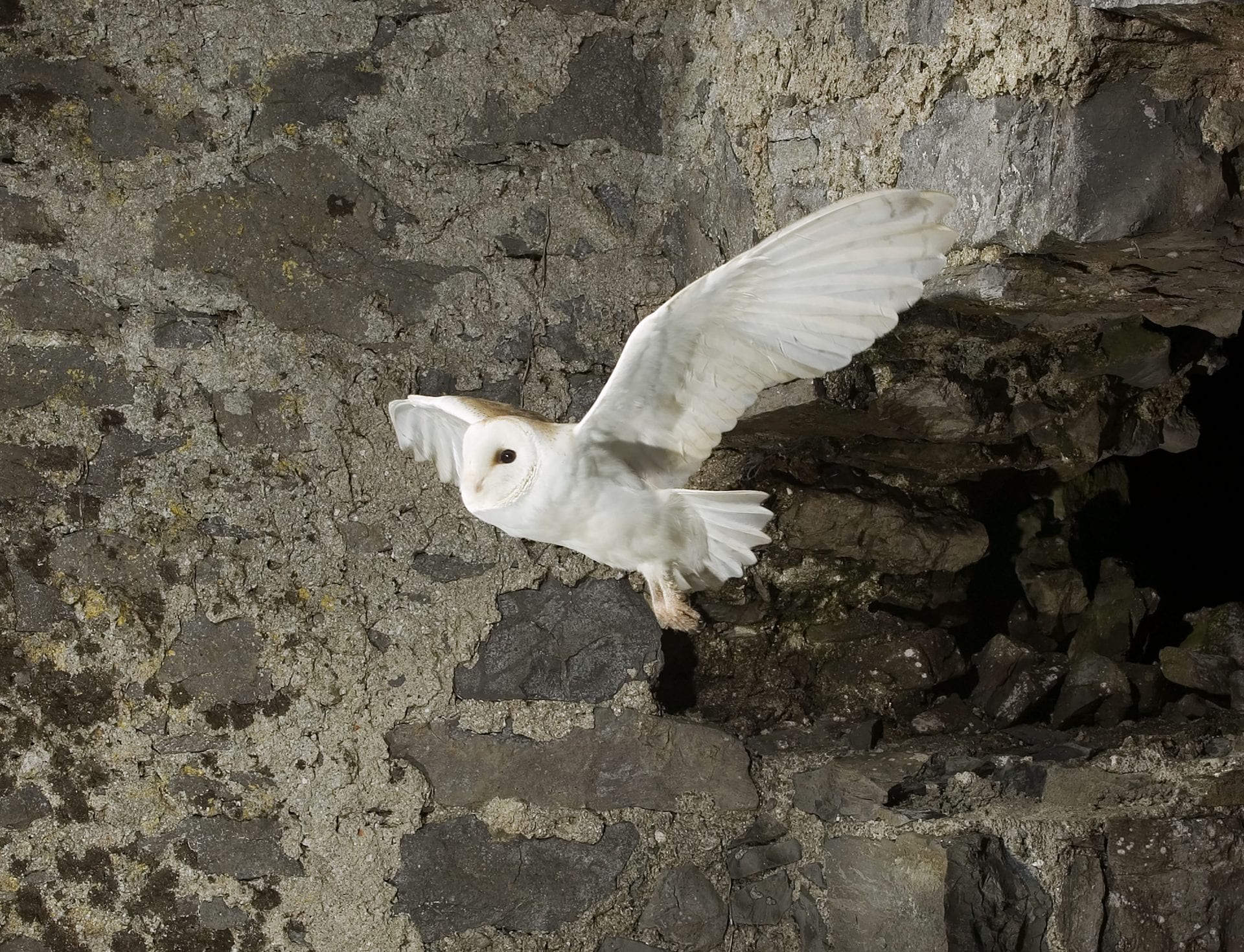
Celebrate Heritage Week 2024 at your local BirdWatch Ireland event
The theme of this year’s National Heritage Week, “Connections, Routes and Networks”, invites people across the country to explore the ways we are connected to each other through physical or cultural ties. Running from Saturday, August 17th until Sunday, August 25th, the week offers an array of free events nationwide.
Birds give us the perfect opportunity to reflect on the interconnected nature of all things. Migratory species, including Greenland White-fronted Geese, Whooper Swans and other species that will soon migrate to Ireland for winter, traverse the globe, linking the people and countries along their migration routes. Their existence fosters cooperation between nations, as the conservation of migratory birds relies on international collaboration.
Just as birds are reliant on human cooperation and connection to thrive, our own well-being is very much dependent on birds. We rely on birds for vital services including pollination and insect control. Moreover, birds have inspired humans for centuries, leading to the creation of some of our most cherished art and literature.
This National Heritage Week, celebrate birds and the many ways they connect us by attending one of the BirdWatch Ireland events organised by BirdWatch Ireland staff and/ or local branches. Find one near you using the list below. Find the contact details for your local BirdWatch Ireland branch here.
Cavan
BirdWatch Ireland’s Barn Owl Research Officer Alan McCarthy will be giving a talk about Barn Owls in Cavan on Wednesday, August 21st at 7.30 p.m. The talk will take place in the Boardroom (top floor) of the Bridge Street Centre, Cavan Town.
On Thursday, August 22nd from 7 p.m. until 8 p.m., the BirdWatch Ireland Cavan Branch will hold a birdwatching walk and talk. This will take place in the car park for Turbet Island, Belturbet (same meetup point as for the Dawn Chorus Event in Belturbet). The talk will be delivered by Derek Belton and will mention some of the birds you are likely to see on Turbet Island with a particular focus on birds associated with the water like the Grey Heron, Grey Wagtail, Kingfisher, Mute Swan and Great Crested Grebe.
Meanwhile, on Friday, August 23rd, join Annie Birtwistle for a free Swift Talk in Bailieborough Business Centre, Co Cavan at 7.30 p.m. To celebrate Heritage Week, we will be talking about these amazing birds, the results of the 2024 Cavan survey and what can be done to help safeguard our Swift population. For more info, email cavanheritage@cavancoco.ie.
This talk is funded by Cavan County Council through LBAF @NPWS
Cork (West)
The BirdWatch Ireland West Cork branch will hold a Family Event at Rosscarbery on Sunday, August 18th between 2.30 p.m. and 4.30 p.m. Find out more about the birds that use the estuary on migration and during the winter.
Meet on the causeway opposite the Celtic Ross Hotel, Rosscarbery (GPS 51.575134, -9.029499). Contact Nicholas Mitchell for more information at treasurer@birdwatchirelandwestcork.ie/ 087 121 5256.
Donegal
The BirdWatch Ireland Donegal branch will hold an outing on Saturday, August 17th to Blanket Nook Lake. They will meet in the car park at Kernan’s Diner at Newtown Cunningham at 10 a.m. and then continue on to the lake for a birding walk of 2/ 3 hours duration.
Dublin South
Ahead of National Heritage Week, the BirdWatch Ireland South Dublin branch will run an outing to Sandymount Strand, Dublin on Thursday, August 15th. It is hoped that attendees will have the chance to observe the arrival of the annual late summer tern roost at Sandymount Strand. Wellington boots or similar are advised.
Meet in Sandymount Strand, car park 3 on Strand Road. See here for a map and more information on Sandymount Strand. The car park is at Flag F on the map.
Galway
Celebrate Galway City's Heritage with a talk about Swifts and the 2024 Galway City Swift Survey. Join BirdWatch Ireland staff on Tuesday, August 20th at 6 p.m. in Galway City Library. For more info, email parks.department@galwaycity.ie.
This talk is funded by Galway City Council LBAF.
Kildare
The BirdWatch Ireland Kildare branch will host an outing to Sandymount Strand on Thursday, August 22nd to watch thousands of Common and Arctic Terns gather to roost. Meet at the car park closest to Merrion Gates at 7 p.m.
Louth
In celebration of Ireland's Heritage, join BirdWatch Ireland staff on Thursday, August 22nd in Dundalk Library for a talk about Swifts and the work being carried out in Louth to conserve these amazing species. The talk will start at 6.30 p.m.
Booking is essential. Call Dundalk Library on 042 9353190
This event is funded through Louth Coco LBAF.
Meath
On Saturday, August 17th from 2 p.m. until 4 p.m., the BirdWatch Ireland Meath branch will host a hedgerow ‘walk & talk’ with Mark McDowell in Navan. Mark has completed hedge-laying on the site, so you will see the rejuvenation and regrowth that comes from this traditional management practice. Booking is required. To register, see birdwatchirelandmeath.com.
Meanwhile, on Monday, August 19th, join BirdWatch Ireland staff for an evening talk about Meath's Swifts in Solstice Arts Centre, Navan. Find out about these fascinating birds, and the work being carried out in Co. Meath to protect them. Refreshments from 7.40 p.m. Talk begins at 8 p.m. Booking is required. Contact Meath County Council's Heritage Office at biodiversity@meathcoco.ie to book.
This talk is funded by Meath County Council LBAF.
Monaghan
BirdWatch Ireland’s Barn Owl Research Officer Alan McCarthy will be giving a talk about the Barn Owls of Monaghan on Monday, August 19th at 7 p.m. The event will take place in Doohamlet Community Centre, Monaghan.
Tipperary
The BirdWatch Ireland Tipperary branch will run an event at Clonmel Heritage Event in Clonmel Park on Saturday, August 24th from 3.30 p.m.
Wicklow
Raptor Conservation Officer with BirdWatch Ireland, John Lusby, will team up with The Wicklow Barn Owl Group for a talk in Rathdrum Library on Wednesday, August 21st from 6 p.m. until 8 p.m. Entitled "Wicklow Barn Owls: Connecting Pellets, Poo and Library Cards!", the talk will introduce people to the fascinating world of Barn Owls and Barn Owl pellets. Attendees will explore the amazing lifecycle of Barn Owls at this event, which includes a workshop and the official launch of the new Barn Owl themed Wicklow Library Card.
Numbers are limited by the capacity of the venue, please drop an email to eao@wicklowcoco.ie to book a place.
The Wicklow Barn Owl group is a partnership between Wicklow County Council and National Parks and Wildlife Service established in 2022. The group gathers barn owl sightings in the Wicklow countryside and works with, farmers, landowners Birdwatch Ireland and community enthusiasts on an ongoing basis to encourage more breeding success through the installation and monitoring of artificial nest boxes. The Wicklow Barn Owl project project is co-funded by NPWS, The Heritage Council and Wicklow County Council through the local biodiversity action plan fund.
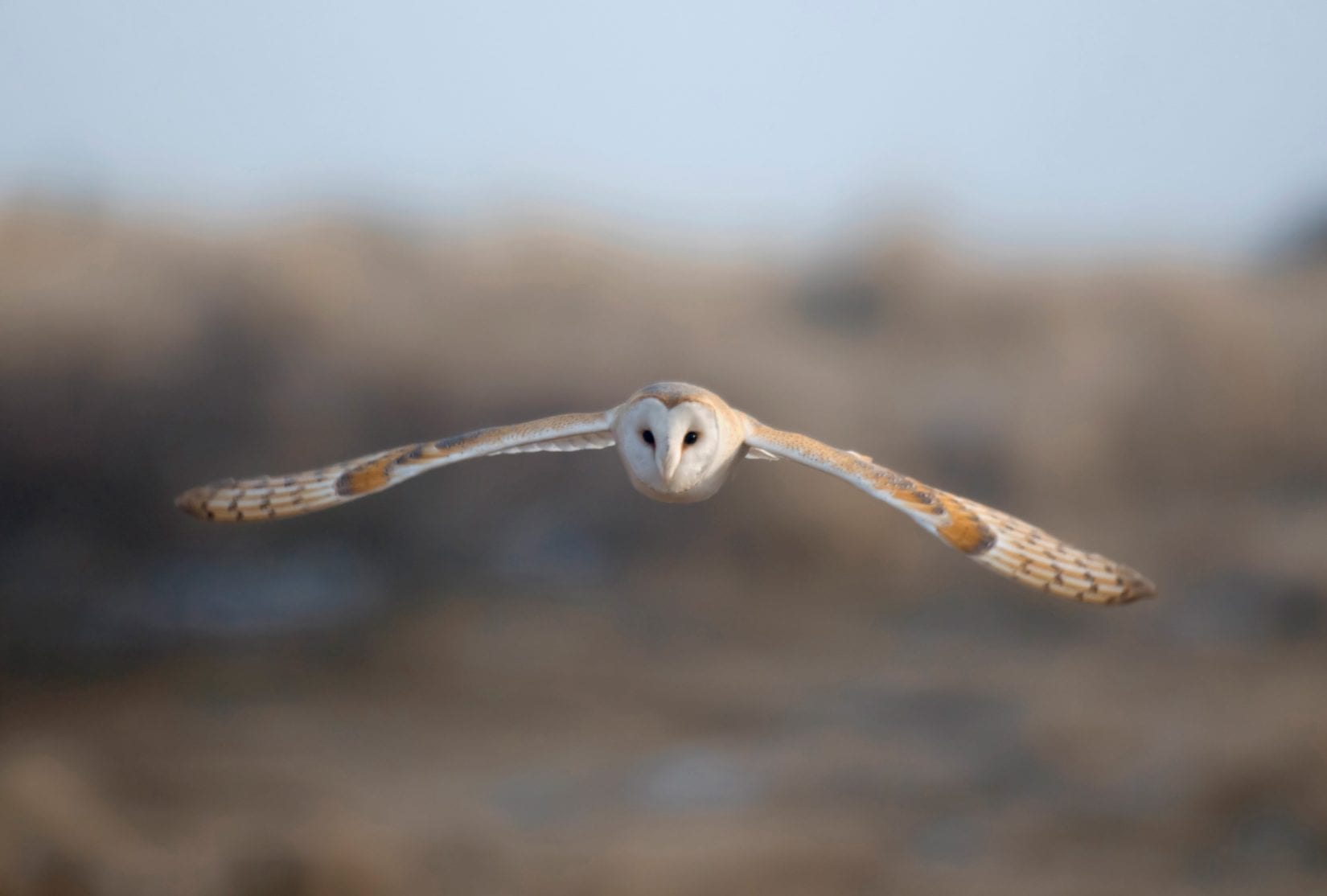
Record number of Barn Owls breed in 2023 thanks to BirdWatch Ireland conservation work
Another Barn Owl breeding season has just come to an end and this one was the best on record, according to the latest figures from the BirdWatch Ireland Raptor Conservation Team.
The breeding productivity and the number of breeding pairs monitored surpasses all previous records.
We are now calling on the public to support our Barn Owl Appeal to help to continue to drive the recovery of this red-listed species.
2023 saw a of milestones for Barn Owls in Ireland. In August, a record 100 Barn Owl nests were recorded in County Cork alone. Additionally, for the first time ever, BirdWatch Ireland recorded a brood of six young Barn Owls in nests in several counties which included Offaly, Kilkenny, Limerick, Wexford and Clare and for the first time ever, we recorded a brood of seven Barn Owls in a nest in Ireland (thanks to the monitoring of Áine Lynch and the Tipperary Barn Owl Team). This season, we also ringed 150 broods, the highest number to date.
 Barn Owl peering out of its nesting hole in an ash tree after dark (Mike Brown)
In recent months, widespread public support coupled with the expertise and dedication of the Raptor Conservation Officers has allowed us to expand our work aimed at supporting this vulnerable species. This included, among other things, giving the public an intimate look into the lives of Barn Owls by livestreaming from a nest in an abandoned cottage in Cork for the first time. Over half a million people tuned into the livestream while the nest was occupied.
Barn Owls are an iconic but unfortunately, red-listed species that face a wide number of threats in Ireland including rodenticide poisoning, road collision and habitat loss. BirdWatch Ireland is working to change their trajectory. Through a wide range of measures, we have been monitoring and supporting vulnerable Barn Owls in a number of counties for over 20 years.
We want to continue our conservation focus on Barn Owls to take advantage of the recent population increases and to ensure that the population continues to recover until its future is secured. We know that our conservation efforts to date have worked, and we are looking for help to support us to continue and expand on these efforts for Barn Owls and biodiversity as a whole. We have received funding through NPWS and several Local Authorities through the Local Biodiversity Action Fund, as well as Dublin Zoo, which has allowed us to undertake much of this work. However, our conservation work for Barn Owls in other Counties and on specific aspects including research and Barn Owl rescues is entirely unfunded, donations made through our Barn Owl Appeal are vital for this work to continue.
Barn Owl peering out of its nesting hole in an ash tree after dark (Mike Brown)
In recent months, widespread public support coupled with the expertise and dedication of the Raptor Conservation Officers has allowed us to expand our work aimed at supporting this vulnerable species. This included, among other things, giving the public an intimate look into the lives of Barn Owls by livestreaming from a nest in an abandoned cottage in Cork for the first time. Over half a million people tuned into the livestream while the nest was occupied.
Barn Owls are an iconic but unfortunately, red-listed species that face a wide number of threats in Ireland including rodenticide poisoning, road collision and habitat loss. BirdWatch Ireland is working to change their trajectory. Through a wide range of measures, we have been monitoring and supporting vulnerable Barn Owls in a number of counties for over 20 years.
We want to continue our conservation focus on Barn Owls to take advantage of the recent population increases and to ensure that the population continues to recover until its future is secured. We know that our conservation efforts to date have worked, and we are looking for help to support us to continue and expand on these efforts for Barn Owls and biodiversity as a whole. We have received funding through NPWS and several Local Authorities through the Local Biodiversity Action Fund, as well as Dublin Zoo, which has allowed us to undertake much of this work. However, our conservation work for Barn Owls in other Counties and on specific aspects including research and Barn Owl rescues is entirely unfunded, donations made through our Barn Owl Appeal are vital for this work to continue.
 Barn Owl (Anna David)
BirdWatch Ireland has built an extensive body of Barn Owl research and with support, we hope to continue to build on this. This research includes undertaking surveys, which help us to better understand the status, distribution and health of populations in different areas of the country, identify nest sites and inform conservation requirements. We also document nest sites and feed this information into a national database of Barn Owl breeding sites. This database, which now includes almost 800 nest sites, provides source information to inform a range of our research and conservation activities.
By monitoring breeding success at a range of Barn Owl nest sites on an annual basis, we can also assess trends in breeding and the health of the population. The survey and monitoring efforts work in close collaboration with a wide range of individuals, groups and BirdWatch Ireland Branches across the country, including the Wexford Barn Owl Project, Wicklow Barn Owl Group, Laois Barn Owl Project, Offaly Barn Owl Conservation Project and the Barn Owl ringing team, to name a few.
We also collaborate with others on research initiatives aimed at increasing our understanding of Barn Owl behaviour and the pressures and threats that they face. Some of these research initiatives are looking at topics such as the extent of exposure to rodenticides in Barn Owls in Ireland, the impacts of major roads on Barn Owls and a European-wide initiative on the effects of weather patterns on Barn Owl hunting and breeding success.
As part of our Barn Owl conservation work, BirdWatch Ireland also manages a range of Barn Owl nest box schemes and this has been a huge success to date. We have recorded Barn Owls breeding in and using over 250 nest boxes to date, with this number increasing on an annual basis.
Other work includes mitigating relevant threats through measures such as nest site improvement, carrying out Barn Owl rescues, ringing Barn Owl chicks and helping to safeguard the future of the species through informing conservation approaches and providing landowner advice.
Those who support our Barn Owl Appeal can help to fund all of this work and more. More information about the Appeal and a donation link can be found here
Barn Owl (Anna David)
BirdWatch Ireland has built an extensive body of Barn Owl research and with support, we hope to continue to build on this. This research includes undertaking surveys, which help us to better understand the status, distribution and health of populations in different areas of the country, identify nest sites and inform conservation requirements. We also document nest sites and feed this information into a national database of Barn Owl breeding sites. This database, which now includes almost 800 nest sites, provides source information to inform a range of our research and conservation activities.
By monitoring breeding success at a range of Barn Owl nest sites on an annual basis, we can also assess trends in breeding and the health of the population. The survey and monitoring efforts work in close collaboration with a wide range of individuals, groups and BirdWatch Ireland Branches across the country, including the Wexford Barn Owl Project, Wicklow Barn Owl Group, Laois Barn Owl Project, Offaly Barn Owl Conservation Project and the Barn Owl ringing team, to name a few.
We also collaborate with others on research initiatives aimed at increasing our understanding of Barn Owl behaviour and the pressures and threats that they face. Some of these research initiatives are looking at topics such as the extent of exposure to rodenticides in Barn Owls in Ireland, the impacts of major roads on Barn Owls and a European-wide initiative on the effects of weather patterns on Barn Owl hunting and breeding success.
As part of our Barn Owl conservation work, BirdWatch Ireland also manages a range of Barn Owl nest box schemes and this has been a huge success to date. We have recorded Barn Owls breeding in and using over 250 nest boxes to date, with this number increasing on an annual basis.
Other work includes mitigating relevant threats through measures such as nest site improvement, carrying out Barn Owl rescues, ringing Barn Owl chicks and helping to safeguard the future of the species through informing conservation approaches and providing landowner advice.
Those who support our Barn Owl Appeal can help to fund all of this work and more. More information about the Appeal and a donation link can be found here
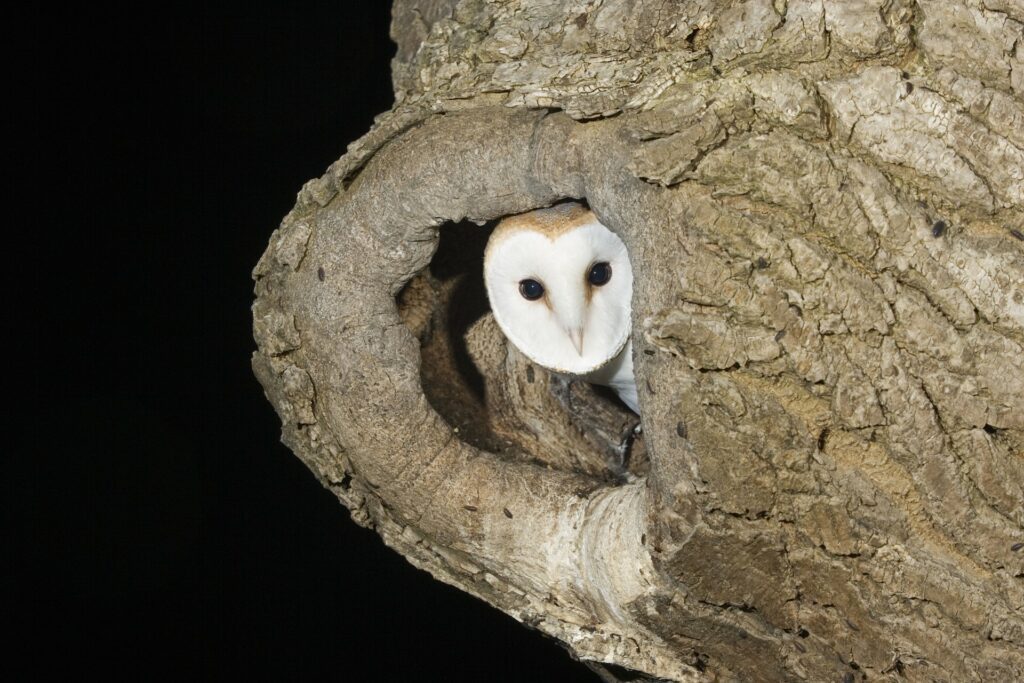 Barn Owl peering out of its nesting hole in an ash tree after dark (Mike Brown)
In recent months, widespread public support coupled with the expertise and dedication of the Raptor Conservation Officers has allowed us to expand our work aimed at supporting this vulnerable species. This included, among other things, giving the public an intimate look into the lives of Barn Owls by livestreaming from a nest in an abandoned cottage in Cork for the first time. Over half a million people tuned into the livestream while the nest was occupied.
Barn Owls are an iconic but unfortunately, red-listed species that face a wide number of threats in Ireland including rodenticide poisoning, road collision and habitat loss. BirdWatch Ireland is working to change their trajectory. Through a wide range of measures, we have been monitoring and supporting vulnerable Barn Owls in a number of counties for over 20 years.
We want to continue our conservation focus on Barn Owls to take advantage of the recent population increases and to ensure that the population continues to recover until its future is secured. We know that our conservation efforts to date have worked, and we are looking for help to support us to continue and expand on these efforts for Barn Owls and biodiversity as a whole. We have received funding through NPWS and several Local Authorities through the Local Biodiversity Action Fund, as well as Dublin Zoo, which has allowed us to undertake much of this work. However, our conservation work for Barn Owls in other Counties and on specific aspects including research and Barn Owl rescues is entirely unfunded, donations made through our Barn Owl Appeal are vital for this work to continue.
Barn Owl peering out of its nesting hole in an ash tree after dark (Mike Brown)
In recent months, widespread public support coupled with the expertise and dedication of the Raptor Conservation Officers has allowed us to expand our work aimed at supporting this vulnerable species. This included, among other things, giving the public an intimate look into the lives of Barn Owls by livestreaming from a nest in an abandoned cottage in Cork for the first time. Over half a million people tuned into the livestream while the nest was occupied.
Barn Owls are an iconic but unfortunately, red-listed species that face a wide number of threats in Ireland including rodenticide poisoning, road collision and habitat loss. BirdWatch Ireland is working to change their trajectory. Through a wide range of measures, we have been monitoring and supporting vulnerable Barn Owls in a number of counties for over 20 years.
We want to continue our conservation focus on Barn Owls to take advantage of the recent population increases and to ensure that the population continues to recover until its future is secured. We know that our conservation efforts to date have worked, and we are looking for help to support us to continue and expand on these efforts for Barn Owls and biodiversity as a whole. We have received funding through NPWS and several Local Authorities through the Local Biodiversity Action Fund, as well as Dublin Zoo, which has allowed us to undertake much of this work. However, our conservation work for Barn Owls in other Counties and on specific aspects including research and Barn Owl rescues is entirely unfunded, donations made through our Barn Owl Appeal are vital for this work to continue.
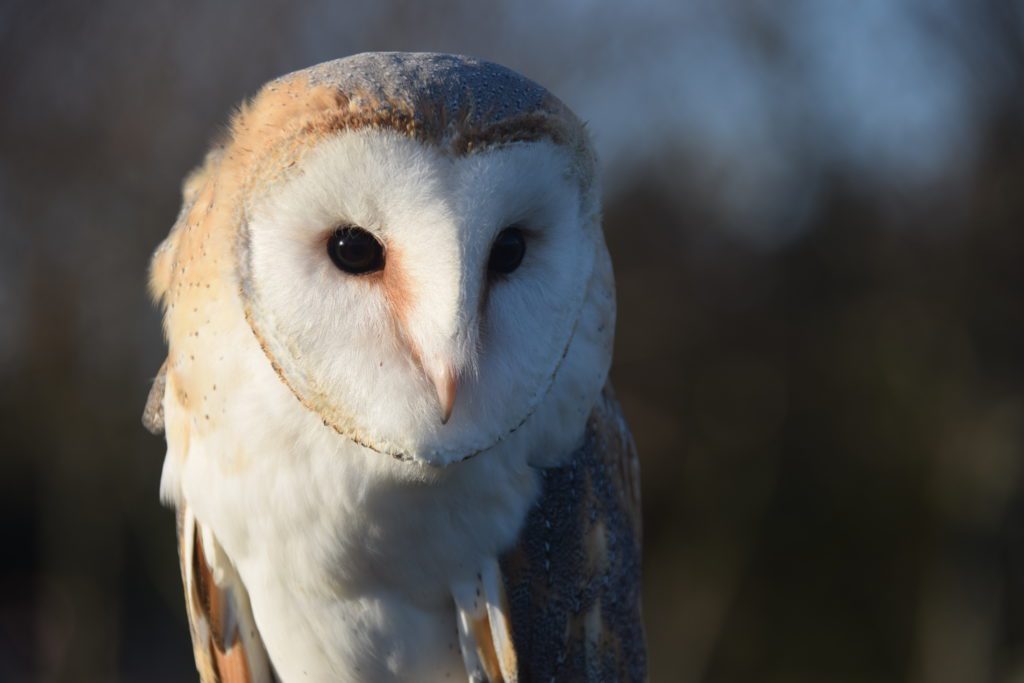 Barn Owl (Anna David)
BirdWatch Ireland has built an extensive body of Barn Owl research and with support, we hope to continue to build on this. This research includes undertaking surveys, which help us to better understand the status, distribution and health of populations in different areas of the country, identify nest sites and inform conservation requirements. We also document nest sites and feed this information into a national database of Barn Owl breeding sites. This database, which now includes almost 800 nest sites, provides source information to inform a range of our research and conservation activities.
By monitoring breeding success at a range of Barn Owl nest sites on an annual basis, we can also assess trends in breeding and the health of the population. The survey and monitoring efforts work in close collaboration with a wide range of individuals, groups and BirdWatch Ireland Branches across the country, including the Wexford Barn Owl Project, Wicklow Barn Owl Group, Laois Barn Owl Project, Offaly Barn Owl Conservation Project and the Barn Owl ringing team, to name a few.
We also collaborate with others on research initiatives aimed at increasing our understanding of Barn Owl behaviour and the pressures and threats that they face. Some of these research initiatives are looking at topics such as the extent of exposure to rodenticides in Barn Owls in Ireland, the impacts of major roads on Barn Owls and a European-wide initiative on the effects of weather patterns on Barn Owl hunting and breeding success.
As part of our Barn Owl conservation work, BirdWatch Ireland also manages a range of Barn Owl nest box schemes and this has been a huge success to date. We have recorded Barn Owls breeding in and using over 250 nest boxes to date, with this number increasing on an annual basis.
Other work includes mitigating relevant threats through measures such as nest site improvement, carrying out Barn Owl rescues, ringing Barn Owl chicks and helping to safeguard the future of the species through informing conservation approaches and providing landowner advice.
Those who support our Barn Owl Appeal can help to fund all of this work and more. More information about the Appeal and a donation link can be found here
Barn Owl (Anna David)
BirdWatch Ireland has built an extensive body of Barn Owl research and with support, we hope to continue to build on this. This research includes undertaking surveys, which help us to better understand the status, distribution and health of populations in different areas of the country, identify nest sites and inform conservation requirements. We also document nest sites and feed this information into a national database of Barn Owl breeding sites. This database, which now includes almost 800 nest sites, provides source information to inform a range of our research and conservation activities.
By monitoring breeding success at a range of Barn Owl nest sites on an annual basis, we can also assess trends in breeding and the health of the population. The survey and monitoring efforts work in close collaboration with a wide range of individuals, groups and BirdWatch Ireland Branches across the country, including the Wexford Barn Owl Project, Wicklow Barn Owl Group, Laois Barn Owl Project, Offaly Barn Owl Conservation Project and the Barn Owl ringing team, to name a few.
We also collaborate with others on research initiatives aimed at increasing our understanding of Barn Owl behaviour and the pressures and threats that they face. Some of these research initiatives are looking at topics such as the extent of exposure to rodenticides in Barn Owls in Ireland, the impacts of major roads on Barn Owls and a European-wide initiative on the effects of weather patterns on Barn Owl hunting and breeding success.
As part of our Barn Owl conservation work, BirdWatch Ireland also manages a range of Barn Owl nest box schemes and this has been a huge success to date. We have recorded Barn Owls breeding in and using over 250 nest boxes to date, with this number increasing on an annual basis.
Other work includes mitigating relevant threats through measures such as nest site improvement, carrying out Barn Owl rescues, ringing Barn Owl chicks and helping to safeguard the future of the species through informing conservation approaches and providing landowner advice.
Those who support our Barn Owl Appeal can help to fund all of this work and more. More information about the Appeal and a donation link can be found here

